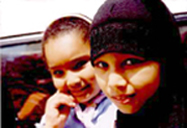
The first wave of refugees in Lebanon consisted of Palestinians who fled Israel after 1948. More came after the June 1967 war and the conflict between the PLO and the Jordanian Army in 1970. According to data collected by the United Nations, Lebanon hosts more than 350,000 Palestinian refugees, scattered in 12 camps in both the North and the South. The refugees are prevented by Lebanese law from having the most desirable jobs in Lebanon. In this camp, as in the others scattered throughout Lebanon, many refugees lack the means to buy themselves and their children Palestinian identity cards, and strict measures are imposed on their movement outside of the camps. Because many of the past couple of generations' refugees may have never set foot on the soil of their native country, they remain in a strange limbo state-not willing or allowed to become Lebanese citizens, but not citizens of a would-be Palestinian nation either. It is estimated that only 10,000 of the refugees living in Lebanon have acquired Lebanese citizenship.
It is also estimated that 95 percent of the Palestinian refugees living in Lebanon are Sunni Muslims, meaning that any permanent settlement of refugees would upset the tricky balance between Lebanon's religious communities.
Next Page
Previous Page
USEFUL LINKS
WHO ARE WE?
CONTACT US
FEATURE STORIES
Caught in the cross fire: Is Beirut Ready for Tourism?
Marriage: Lebanese Style
Meet Lebanon's only Male Belly Dancer
Beirut Blues
Christians Looking for a Better Future
The Woman Behind the Walls
Back to Home Page